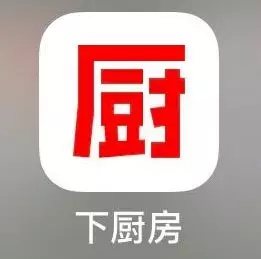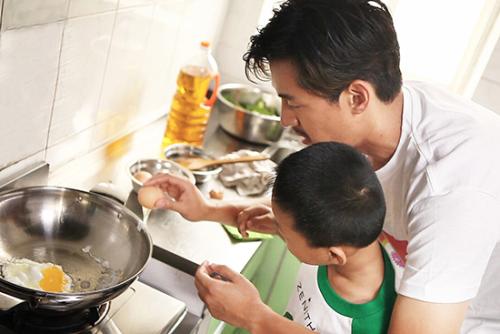
Introduction:
“Xiachufang” is an entry in to Chinese home cuisine on the internet. It is a mobile application that provides the purchase of ingredients, kitchen supplies, and the query and most importantly, sharing of recipes. The online recipe sharing community was a relatively new concept when the idea was introduced. But as of August 2016, there are more than 600,000 original recipe contents, and 20 million gourmet works have been uploaded to this online platform.
Among them, the iPhone version of “Xiachufang” was selected as the App Store application and was selected as a demonstration app by the Apple Store offline experience store and was selected as the App Store’s best 2013 gourmet app in China.
After launching the marketplace business at the end of 2014, it has become a food e-commerce platform for suppliers and consumers who value quality; in the field of kitchen appliances, it has revealed its dominant position, and has established strategic cooperation with brands such as Panasonic covering sales and brand promotion. The selling of personalized quality foods and ingredients highlights the vision and tonality of the kitchen selection. Many long-tail products have become popular models through the push of the application. In addition to product brands, many channel brands and e-commerce platforms have also become suppliers of “Xiachufang”, such as Yiguo in the fresh produce sector, spring sowing, and Sam’s member stores in the imported food sector, highlighting the entry status of “Xiachufang”.
The kitchen UGC gourmet content and KOL cultivated by a large number of platforms can provide value-added services for cooperative products, provide more help for consumers’ purchase decisions, and the combination of media and e-commerce is an advantage that traditional e-commerce does not have. Because of the advantages of users, the kitchen can focus on the platform building and online user experience in an asset-light manner, while leaving the storage, logistics, and packaging to the supplier.

The Community:
Gender: More than 70% are female users. From a cultural perspective, it is not surprising to me that there are still more women who are cooking in China. Even though the Chinese modern household do not hold the same values of the older generation, there are still societal expectations that have prejudices of women cooking in the household. So, the design of the app are targeted more towards the “feminine” taste.
Age: The main users of the Xiachufang app are people who were boring in the 80s and 90s. 40% of users are in the age range of 31-35 years old, have a certain number of working years, most of them may be married, is the main people cooking at home. The second most users are 25-30 years old people. Soon after leaving college campuses, some rented houses, live alone, and they may cook their own meals or often call for takeaways (one of the most lucrative and popular ways of eating in China); some may live with their parents and may not cook their own meals. People who are 36-40 use the app noticeably less. This may be because this older population are more stable in their lives and have figured out their own set of cooking recipes, so they do not need to refer to recipes often.
Industry/Occupation: Weibo users who pay attention to the Xiachufang app are educated, and a large part of them are from overseas. It can be speculated that when people want to cook Chinese food, no one around them in a foreign setting can help. Looking at the data, there are higher education professions such as science and technology, media, design, culture, banking, and the ranks are also managers and directors that use the app. There are also some people who are freelancers (including housewives and husbands) and Taobao sellers (who have relatively flexible time in their daily schedule). Among the users who pay attention to the kitchen, housewives account for 61.94%, followed by blue-collar workers, workplace workers (the proportion of which is close), student party, and social elites. Therefore, users who can roughly launch Xiachufang are mainly highly educated, ordinary professionals, and housewives.
Pros and Cons (demonstrated through scenarios)
Pros
1. What if I want to cook my own food but do not know how? For a lot of us, that usually means asking our parents. For example, there was a commercial for the China Merchants Bank called “Tomato Scrambled Egg”. The commercial is about Chinese students who are studying abroad that wanted to cook the dish. Regardless of time difference, they wake their parents in the middle of the night and get step-by-step instructions on the phone. But if the parents or other people who can guide them are not around, they are helpless. With Xiachufang, you do not have to wake up your parents at all, you can easily learn the step by step instructions based on the recipe, and you can even refer to pictures and videos in that online community or even chat with the writer of the recipe.
2. A person who is proficient in cooking arrives home at the end of a day exhausted, looks at what is in the refrigerator and wonders what to make with the produce in hand. For these situations, the person will rely on experience and cook some dishes that have been repeatedly made, and the family might complain that they are tired of eating the repetitive dish. With this app, there is a wide choice of recipes posted by the large community that can give the user a wide variety of recipes.
3. Food lovers (influencers) who have successfully completed a cooking masterpiece and feel that they are particularly proud. What do they usually do? It may be taking photos and sharing with friends/Weibo, harvesting a wave of likes, but people loose interest after a while, and users will be tired of taking photos. It is not the same when it is posted to Xiachufang. The community of the app are very enthusiastic about cooking. They will discuss with each other about whether it is better to change a seasoning or how creating a different atmosphere can change the taste of the food. They can even get the recognition from gourmet cooks and reviews.
Cons
1. Unfriendly to novices: Most recipes are uploaded by users spontaneously. Veterans often use words such as “appropriate” and “a little”, and it is difficult for novices to control the amount of seasonings, which often determines the success of the dish. Therefore, generally those who can successfully cook under the instructions of the community are those who have a little knowledge or talent in cooking.
Suggestion: The most important thing for a novice is the need for someone to give hands-on guidance, just like a parent giving a pointer or two around them. So, the app could open a live broadcast teaching function. In addition, some ingredients and seasonings may not be readily available, and some people will point out whether there are suitable substitutes that will not affect the taste of the final work.
2. There is no recipe category: I just mentioned that anyone can share recipes. Although you can search for recipes by searching, it is a very cluttered community. It is more convenient to know the ingredients or dish names, but it is not convenient to find a certain cuisine. Or a specific type of recipe.
Suggestion: They could make a partition according to the recipe classification on the discovery page, such as by region, season, etc., and then display the user uploaded works. Sorting into the corresponding locations can have more detailed options to help users get more inspiration.
Conclusion (Goal of the App):
1. Give young people who are new to society, do not have much cooking experience, and don’t want to torment themselves by making good food a new way to socialize. One can find simple and easy-to-start recipes in Xiachufang to get started quickly;
2. Help house wives/husbands maintain the health of their families, as well as find new interest with the online cooking community. Comprehensive recipes in the app can let them show their skills and make a variety of delicious food.
3. Gourmet enthusiasts love to share their experiences, but before there was no special platform to specialize in making their own food. You can find like-minded people in the Xiachufang to share, communicate and grow together.
Sources
1 reply on “Assignment 3: Case Study”
Thanks for helping us understand Xiachufang, which doesn’t appear to have a clear parallel in the US. The integration with grocery delivery and cooking equipment suppliers is particularly unusual to US audiences… and a good example of how many Chinese platforms are vertically integrated. I like your approach of offering suggestions for how Xiachufang could improve, but it would be helpful to hear more about what you think they are already doing well. It sounds like you’re impressed with the ways Xiachufang is reaching out to inexperienced cooks – do you think it is connecting them to each other, or do they feel more connected to the app than to the broader community? It would be helpful to explore that in considering this as a community case study.